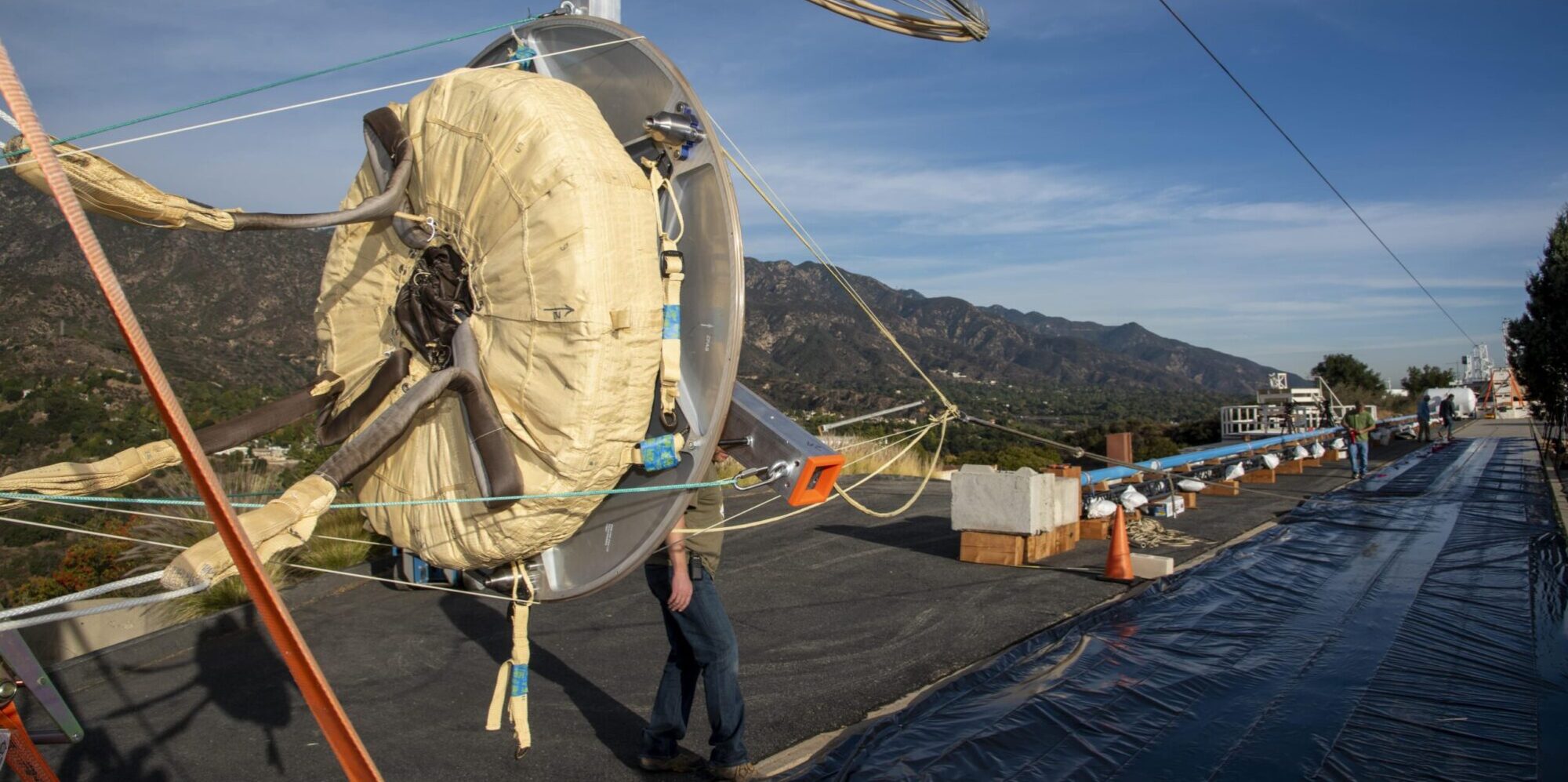Aerocapture technology is one of many propulsion technologies being developed by NASA technologists and their partners, led by NASA’s In-Space Propulsion Technology Office at the Marshall Space Flight Center in Huntsville, Alabama.
Aerocapture — a flight manoeuvre that inserts a spacecraft into its proper orbit once it arrives at a planet – is part of a unique family of “aero assist” technologies under consideration by NASA to enable robust science missions to any planetary body with an appreciable atmosphere. Aerocapture uses a planet’s or moon’s atmosphere to accomplish a quick, near-propellantless orbital capture to place a space vehicle in its proper orbit. The atmosphere is used as a brake to slow down a spacecraft, transferring the energy associated with the vehicle’s high speed into thermal energy.
Vertigo Inc, the inventors of the “Hypercone”, asked Vorticity to conduct the systems engineering tasks to define an aerocapture device based on an inflatable structure that could be used for Mars aerocapture.

The Vorticity/Vertigo partnership included:
- Mission analysis
- Simulation of the controlled aerocapture event including dispersions
- Definition and refinement of the GNC algorithms
- Prediction of minimum lift/drag requirements
- Aerothermal predictions and thermal calculations
- Ballistic coefficient selection and Hypercone sizing
- Structural simulation of Hypercone deformation
- Aerodynamic analysis of the deformed Hypercone using Direct Simulation Monte Carlo methods and coupled FSI


